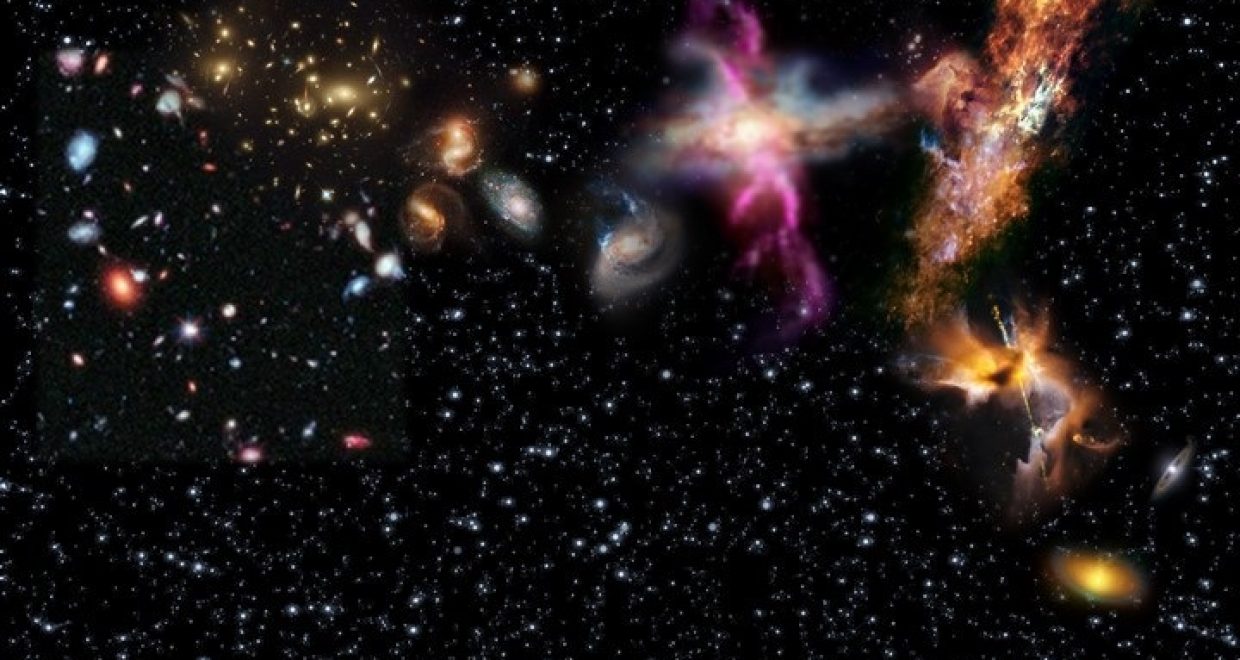Exploring astronomical evolution with SPICA
An Introduction to the SPICA special issue from PASA
Understanding the origin and evolution of galaxies, stars and planets are among the most fundamental objectives of Astronomy. Although a suite of space and ground-based telescopes have allowed impressive advances in recent years, our knowledge is still far from complete. One of the reasons for this is that traditional telescopes, those that operate in the visual and UV parts of the spectrum, are blind to the birth and much of the growth of galaxies, stars and planets, because these phases occur in regions that are often hidden by a thick layer of dust. More than half of the energy ever emitted by stars is absorbed by dust and re-radiated at longer wavelengths. A complete understanding of the physical processes that shape the Universe is only possible with sensitive observations in the infrared, which can penetrate the dust and reveal the inner workings of galaxies, star forming regions and planet forming systems, over a wide range of cosmic time. As most infrared radiation never reaches the ground due to attenuation in the Earth’s atmosphere, these observations need to be carried out from a space platform.
In this special issue, we explore some of the key scientific breakthroughs that could be made with the Space Infrared Telescope for Cosmology and Astrophysics (SPICA). SPICA is a joint European- Japanese project under consideration as an ESA Cosmic Visions M5 mission to be launched at the end of the next decade. SPICA is an infrared space observatory with a large, actively cooled 2.5m diameter telescope, with instruments designed to achieve background limited performance from 12 – 230 microns. Outfitted with the next generation of ultra-sensitive detectors, SPICA will offer the community a unique astronomical observatory capable of reaching unprecedented depths for imaging and spectroscopy. For example, with a nominal spectral line sensitivity of ~5×10-20 W/m2 in 1 hr (5σ), SPICA will be nearly two orders of magnitude more sensitive than the groundbreaking Spitzer and Herschel space telescopes, opening up an entirely new discovery space. In the wavelength domain, it will fill a critical gap between JWST, ALMA and the next generation of ground-based, optical-NIR Extremely Large Telescopes (ELT’s). A complete description of the SPICA mission, payload and instruments appears in Roelfsema et al. (2017).
This PASA special issue is focused on the great strides that we can expect to make with SPICA in the science of extragalactic astrophysics. It comprises six articles that cover the study of nearby, normal star forming galaxies to extremely luminous and exotic systems in the early Universe. In Spinoglio et al. the main outstanding problems that can be directly addressed with SPICA are introduced, and an extensive overview is provided of the key diagnostic lines accessible to SPICA, as well as their value as unique tracers of star formation and black hole growth. Van der Tak et al. explore how resolved spectroscopy of hundreds of local galaxies with SPICA will reveal the full energy balance in the ISM of star forming galaxies, and allow a search for CO-dark missing molecular gas in low-metallicity galaxies, and the variation in the composition and evolution of interstellar dust. Gonzalez-Alfonso et al. explain how SPICA will be able to trace galactic outflows from powerful starbursts and AGN, via molecular absorption and atomic emission lines, to z~2, providing a census of feedback over the past ~10 Gyr, and tracing the baryon cycle in galaxies from high-redshift starbursts to the quiescent galaxies we see around us today. Through the use of both direct and relative abundance measurements, Fernandez-Ontiveros et al. show how SPICA will be able to measure the metallicity of thousands of galaxies out to z~3, and follow the buildup of metals and dust over cosmic time. Gruppioni et al. and Kaneda et al. describe how a combination of shallow/wide area, and deep/pointed photometric and spectroscopic surveys with SPICA will enable the detection of thousands of starburst galaxies and AGN to z~6. Taking advantage of the unique spectral fingerprint from small dust grains in the mid-infrared, the spectroscopic survey will produce a 3D map of the dusty Universe of galaxies, and for the first time give an accurate census of star formation and black hole growth in the infrared to the epoch of re-ionization. Finally, Egami et al. explore how it may even be possible to use SPICA to explore the very early Universe, obtaining the first spectra of low-metallicity, massive collapsing gas clouds at z~7, and detecting the bright H2 cooling lines from shocked, merging massive halos during the epoch of reionization.
Together, these special issue papers describe only a fraction of the exciting science that could be done with SPICA in the quest to understand how galaxies are born and evolve over cosmic time. Enjoy!






